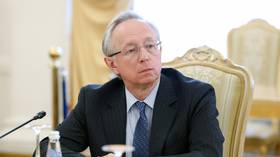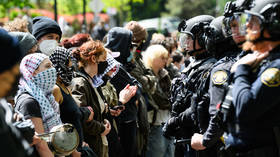West wants ‘color revolutions’ in Central Asia – Moscow

The US and its allies promise Central Asian governments benefits to entice cooperation, but the West will be quick to topple them once they are no longer of use, a senior Russian diplomat has said.
Deputy Foreign Minister Mikhail Galuzin issued the warning in a speech at an event on Central Asian politics hosted by the Valdai Discussion Club in Ufa, Russia on Tuesday.
According to him, the West wants “to reformat” the region for itself, “to call dibs on its natural resources, impose control on transport corridors that run through it, and to turn Central Asia into a staging ground for threats against Russian security.”
Western nations offer partnership programs and joint military exercises to governments in the region, the diplomat said. Other promised benefits include multimillion-dollar investments and preferential access to Western markets. But the overarching Western goal is to gain a firm hold on Central Asia, Galuzin said.
“We assume that once those aims are achieved, the governments in Central Asia would no longer be perceived as fellow travelers. The threat of color revolutions will rise accordingly.”
The term ‘color revolution’ refers to foreign-incited mass protests meant to force the government to resign and make way for purportedly more democratic and Western-approved leadership. Moscow has accused the US of orchestrating color revolutions for geopolitical gain, with NGOs and media organizations funded by Western governments used to lay the groundwork for unrest.
In one example, in December 2013, Victoria Nuland, a key figure in the US State Department responsible for European policy, bragged that Washington had invested $5 billion in a “democratic and European future” for Ukraine. The speech came amid protests in Kiev that later escalated into an armed coup that put the country on a collision course with Russia.
Galuzin insisted that Moscow values national sovereignty and the right of countries to put their own interests first. Central Asian governments “realize all the risks and potential damage that may come from getting too close to the West,” he said.
Russia has historic ties with Central Asia and a record of fruitful cooperation with independent nations in the region which were once part of the USSR, Galuzin added. This record makes the country “an almost indispensable partner” for ensuring regional stability and security, he said.













